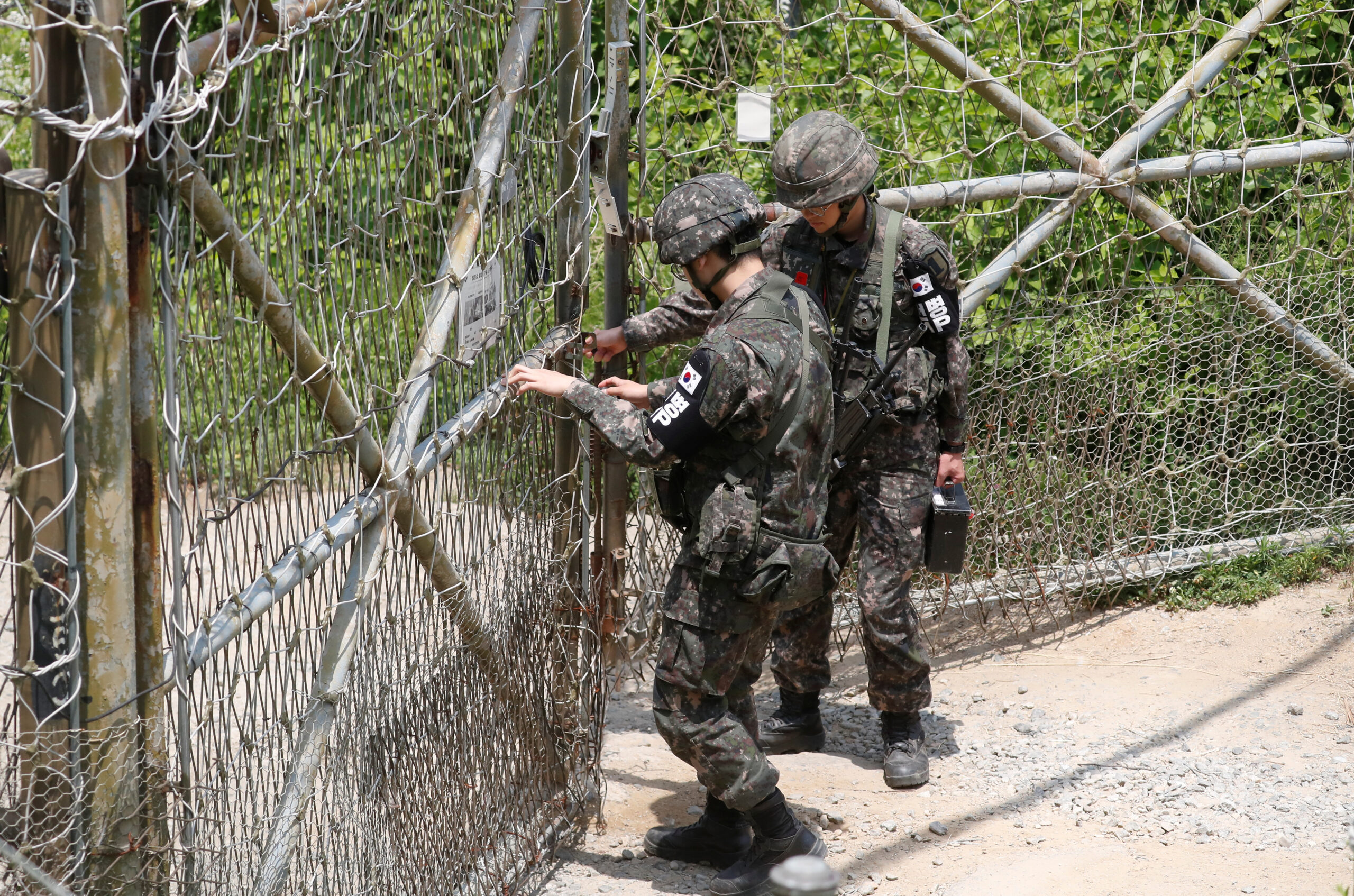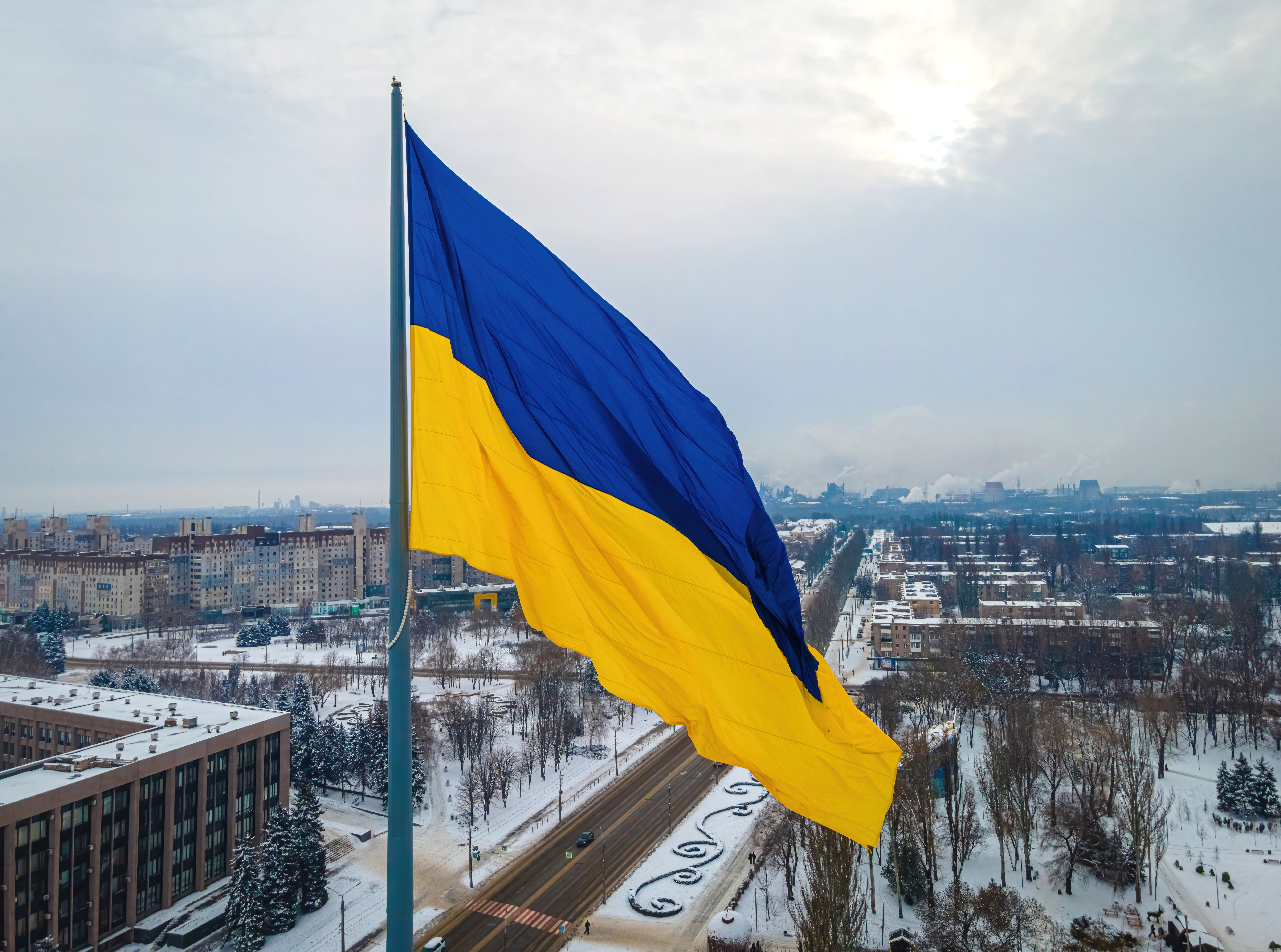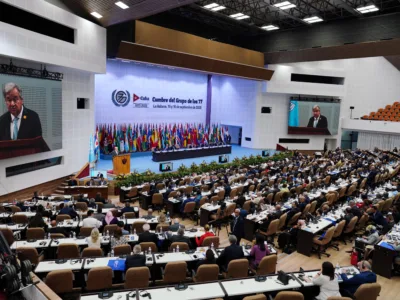Beyond Deterrence: A Peace Game Exercise for the Korean Peninsula
A Korean translation of this brief can be found here.
Executive Summary
This report describes a virtual role-playing peace game exercise conducted in October 2021 that simulated diplomatic negotiations aimed at making tangible progress toward improving relations, enhancing security, and building confidence on the Korean Peninsula. The exercise, hosted by the United States Institute of Peace, Quincy Institute for Responsible Statecraft in Washington, and the Sejong Institute in Seoul, consisted of negotiating teams representing the United States, South Korea, North Korea, and China.
The U.S. and North Korean teams emerged as the principal actors in the exercise, determining whether negotiations remained static or moved forward. However, these teams perceived potential losses in negotiations more acutely than potential gains, which resulted in diplomatic inertia. Both teams seemed open to negotiations as long as the other side took the first conciliatory step, but presidential leadership and political will were necessary to overcome inaction. The U.S. team also seemed more driven by the risks of North Korean aggression and duplicity in negotiations than the South Korean team, which led to divergent policy approaches between allies. In addition, the U.S.-China rivalry fueled a zero-sum mentality that hindered opportunities for progress and heightened misunderstandings between the U.S. and South Korean teams. These observations lead to the following policy recommendations for the actors involved:
- Advancing peace and denuclearization will require the highest level of executive leadership and intervention from all parties to build support for a final agreement. For the United States, that means greater presidential prioritization and increased coordination with Congress.
- All parties should start with smaller, more reversible measures; mitigate the risk of failure; and highlight potential gains. The United States should consider confidence-building measures that jump-start negotiations but do not undermine its security interests.
- Washington should strengthen coordination with Seoul on North Korea policy and other key alliance matters to harmonize strategies.
- To achieve progress, all parties should separate issues pertaining to the Korean Peninsula from the U.S.-China contestations.
Introduction
For decades, U.S. policymakers have viewed North Korea primarily through the lens of a security threat. The fear of North Korean aggression, coercion, brinkmanship, instability, and attack based on the country’s provocative behavior since the 1950–53 Korean War has shaped how Washington views its objectives and risks on the Korean Peninsula. Likewise, North Korea’s own threat perception, based on what it sees as hostile U.S. behavior, has developed into a siege mentality that is used to justify repression at home and belligerence abroad.
In the United States, this security-focused perspective has led to analytical approaches, including war games, tabletop exercises, and simulations, that have focused primarily on how to deter, counter, manage, contain, and defeat the North Korea threat.1 These approaches have contributed to the development of U.S. policies toward North Korea, particularly over the past decade, that have relied heavily on military deterrence and dominance, economic pressure, and diplomatic isolation from the international community. While these tools largely have been successful in achieving their intended objectives, particularly in preventing a war, they have also been severely inadequate in addressing the equally important goals of building peace and improving relations, which require different tools such as diplomatic risk-taking and confidence-building measures. Not surprisingly, there have been few sustained peacebuilding efforts on the Korean Peninsula during the last 70 years.2 As a result, the prevailing security paradigm has maintained a status quo that, while preserving the armistice and deterring major conflict, has not advanced peace and instead has heightened tensions and fueled a regional arms race.
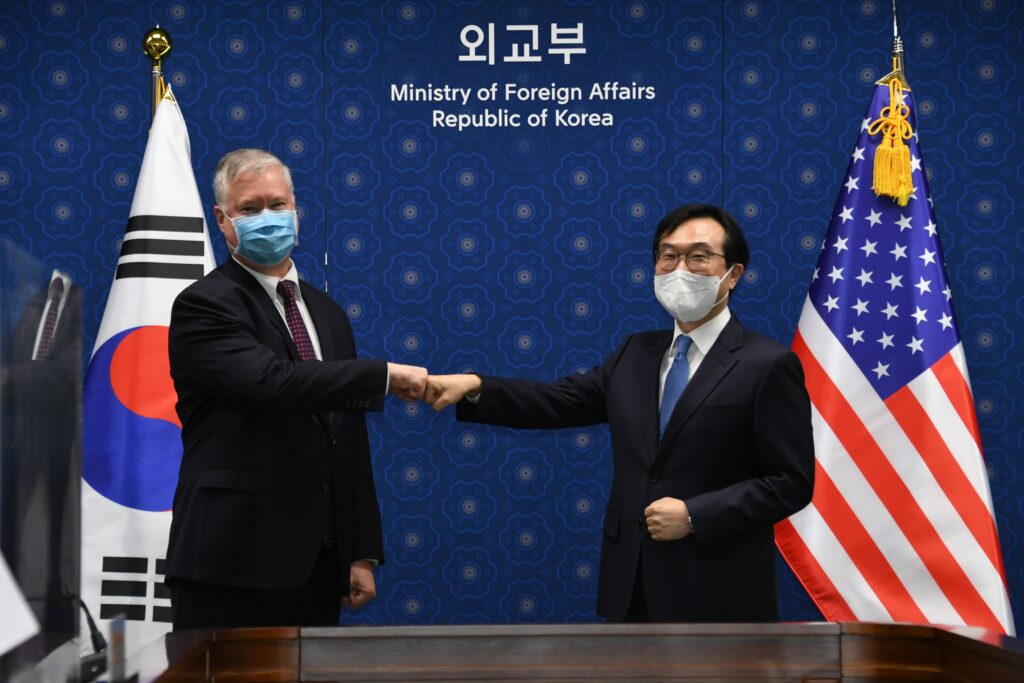
Even when diplomatic engagements have been launched, the inability of the United States, North Korea, South Korea, and China to advance negotiations beyond the initial stages has impeded opportunities to grapple with potential issues that could arise later in the peacebuilding process. The difficulty of resolving present challenges, such as how to initiate dialogue or develop reciprocal exchanges of denuclearization measures and sanctions relief, have pushed longer-term, but equally important, issues such as conventional force reduction, human rights, and the status of the United Nations Command (UNC) to the back burner.
Peace game exercises are not predictive of future behavior, but they can provide critical insights for current and future policymakers on a diplomatic solution to the North Korea challenge that can end the cycle of perpetual diplomatic stalemate and the security dilemma of constant military buildup.
To help overcome the narrow focus on deterrence and risk aversion and explore longer-term challenges in the peacebuilding process, the United States Institute of Peace, the Quincy Institute for Responsible Statecraft in Washington, D.C., and the Sejong Institute in Seongnam, South Korea, conducted a virtual role-playing “peace game” tabletop exercise that simulated diplomatic negotiations aimed at making tangible progress toward improving relations, enhancing security, and building confidence on the Korean Peninsula. The project sought to reframe the assumptions of traditional war game exercises, which often characterize North Korea only as a hostile threat and focus on the goals of deterring conflict, managing instability, achieving near-term denuclearization, and winning or avoiding a war. Instead, the exercise adopted new assumptions that highlight North Korea’s legitimate security interests and emphasize the goals of improving mutual relations, achieving tangible security benefits, reducing tensions, and reaching a final and comprehensive peace settlement.3
The main objectives of the peace game exercise were twofold: (1) to encourage diplomatic risk-taking among participants by introducing conciliatory elements to the hypothetical scenarios that pushed progressively toward a negotiated settlement, and (2) to allow participants to explore opportunities and challenges that might arise in the later stages of a Korean peacebuilding process by having them engage with scenarios that bypassed traditional diplomatic stalemates.
Peace game exercises are not predictive of future behavior, but they can provide critical insights for current and future policymakers on a diplomatic solution to the North Korea challenge that can end the cycle of perpetual diplomatic stalemate and the security dilemma of constant military buildup. This exercise was also designed to help practitioners, academics, and students of North Korea chart a new way of thinking about the Korean Peninsula — one that is focused more on building peace than preserving the status quo.
Exercise structure and format
The peace game exercise employed three hypothetical interconnected scenarios that progressively and cumulatively moved toward a final and comprehensive peace settlement on the Korean Peninsula. The overarching purpose was to examine U.S., North Korean, South Korean, and Chinese responses to mostly conciliatory measures from the other sides and, in the process, encourage diplomatic risk-taking and uncover new challenges and opportunities that have been obscured by the current real-world stalemate. The scenarios were prescriptively established to advance exercise objectives, but participants’ agreements and positions from preceding scenarios were incorporated into subsequent ones as much as possible. The participants were provided with each scenario at least 12 hours before the start of that particular phase of the peace game.
Participants included 16 experts on security policy related to the Korean Peninsula and Northeast Asia, including former diplomats, policymakers, academics, and think tank analysts. The participants were assigned to play the role of negotiators on four teams: the United States, the Democratic People’s Republic of Korea (DPRK, or North Korea), the Republic of Korea (ROK, or South Korea), and China. Each country team was composed of four nationals of that country, except for the North Korean and Chinese teams, which were each composed of three Chinese participants and one U.S. participant. Because of restrictions relating to the COVID-19 pandemic, the experts participated virtually from Washington, Seoul, and Beijing. The exercise was conducted on the Zoom video platform over four days in October 2021, with scenarios played out in two-and-a-half-hour sessions over the first three days and a closing session on the final day when participants provided feedback on the exercise.
The exercise organizers did not include roles for Japan, Russia, or other international actors, despite their significance in regional security. This decision was made after considering the importance of these actors’ views relative to those of the other four countries, as well as the additional time and resources required to represent these views. In addition, the organizers attempted, as much as possible, to achieve diversity among the participants in terms of age, ideology, gender, and areas of expertise (diplomatic, military, and academic).4
Two individuals served as the exercise facilitators and moderated the discussions, the transitions between plenary and small group settings, and the post-exercise review session. Representatives from USIP, Quincy Institute, and the Sejong Institute, as well as the facilitators served as the control team, answered questions about the game format, rules, and scenarios, and injected additional data points into the scenarios when necessary.
The organizers provided two recommendations for how the participants should engage in the exercise. First, they were instructed to suspend disbelief and not challenge the scenarios. The organizers noted that, given how intractable Korean peace and security issues have been in the real world, exercise participants might find it difficult to reach agreement during the simulation. To ensure that there was adequate progress in the exercise, the participants were told that the scenarios might present elements that are difficult to believe, but that they should set their incredulity aside and engage only with the scenario as given. Second, participants were encouraged to be realistic but progress-minded.
Participants were told that the successful execution of the exercise would rely on their being able to accurately represent the motivations, interests, fears, and tendencies of their respective four countries while also tempering the cynicism that normally accompanies the North Korea challenge. The organizers asked participants to represent their country’s interests as faithfully as possible, but also seek progress and not deliberately be spoilers.
Scenario 1: Stockholm Agreement
The first scenario established a baseline diplomatic environment in January 2026 in which an interim agreement (“the Stockholm Agreement”) had already been negotiated and the four countries then had to determine the next steps in the peacebuilding process. The intent behind this scenario was to avoid a dynamic in which participants would be confronting the same issues that have contributed to the current real-world diplomatic stalemate: which party moves first, which initial denuclearization measures North Korea takes, which initial confidence-building measures the United States takes, when will North Korea reemerge from its self-imposed COVID-19 lockdown, and so on. Instead, the scenario would artificially bypass these real-world roadblocks by presenting a situation similar to what could have been possible had the United States and North Korea reached an interim deal during the Trump-Kim summit in Hanoi in February 2019.
In the Stockholm Agreement, North Korea agreed to:
- declare a moratorium on all nuclear and long-range missile activities, including nuclear tests and long-range missile launches;
- shut down and dismantle its satellite launch station at Dongchang-ri;
- allow U.S. and international inspectors to assess the status of the nuclear test site at Punggye-ri;
- shut down all nuclear facilities at Yongbyon, including permitting International Atomic Energy Agency (IAEA) inspectors to monitor the shutdown and establish safeguards;
- permit the establishment of a U.S. liaison office in Pyongyang, and reciprocate by establishing a liaison office in Washington D.C.; and
- resume joint U.S.-DPRK recovery operations for the remains of American service members.
- The United States agreed to:
- declare a moratorium on the deployment of U.S. strategic and nuclear assets in the Korean theater of operations, including F-22 and F-35 stealth fighters, carrier strike groups, ballistic missile submarines, and B-1B, B-2, and B-52 bomber overflights;
- suspend the two major joint U.S.-ROK military exercises (i.e., the Dong Maeng exercises, successor to Key Resolve/Foal Eagle and Ulchi-Freedom Guardian);
- support the suspension of U.N. sanctions on the exports of textiles for one year, which could be renewed if North Korea follows through on its commitments in the agreement;
- • lift the ceiling on imports of refined petroleum from 500,000 to 1 million barrels per year;
- lift the travel ban on U.S. citizens visiting North Korea;
- provide 500,000 tons of nutritional food assistance; and
- establish a joint U.S.-DPRK working group on building a lasting and stable peace regime on the Korean Peninsula.
The exercise organizers devised the Stockholm Agreement based on their assessments of what each country might demand and allow as concessions and what type of measures might help push the peace process forward. In addition, the scenario noted that, to kick off a new phase of multilateral four-party negotiations, the four countries jointly declared an end to the Korean War, but stipulated that this declaration would have no legal or binding effect on the 1953 Armistice Agreement or the UNC until a formal peace treaty was reached.5 The scenario also noted complaints from all sides, particularly from the United States and North Korea, that their respective countries made too many concessions in the Stockholm Agreement while not receiving enough in return.
Team Responses to Scenario 1
After the signing of the Stockholm Agreement, the four teams sought to clarify their goals and interests moving forward. The U.S. and North Korean teams emphasized potential threats and risks, while the South Korean and Chinese teams focused on advancing negotiations. The U.S. team deliberated on North Korea’s intentions and the perceived threats associated with the peace process, such as the growing threat from North Korea’s conventional weapons below the nuclear threshold and China’s influence on the peninsula. There was comparatively little discussion about what the United States should do to ensure the full implementation of the Stockholm Agreement or steps that the United States and South Korea could take to encourage North Korea’s cooperation.
The North Korean team initially expressed skepticism about whether Washington could be trusted to implement the interim agreement and whether the U.S. Congress would approve a peace treaty. It also believed that the interim agreement was imbalanced and sought to secure more reciprocal gestures from Washington (e.g., greater and more permanent sanctions relief) and Seoul (e.g., limitations on the development of missiles and other conventional weapons).
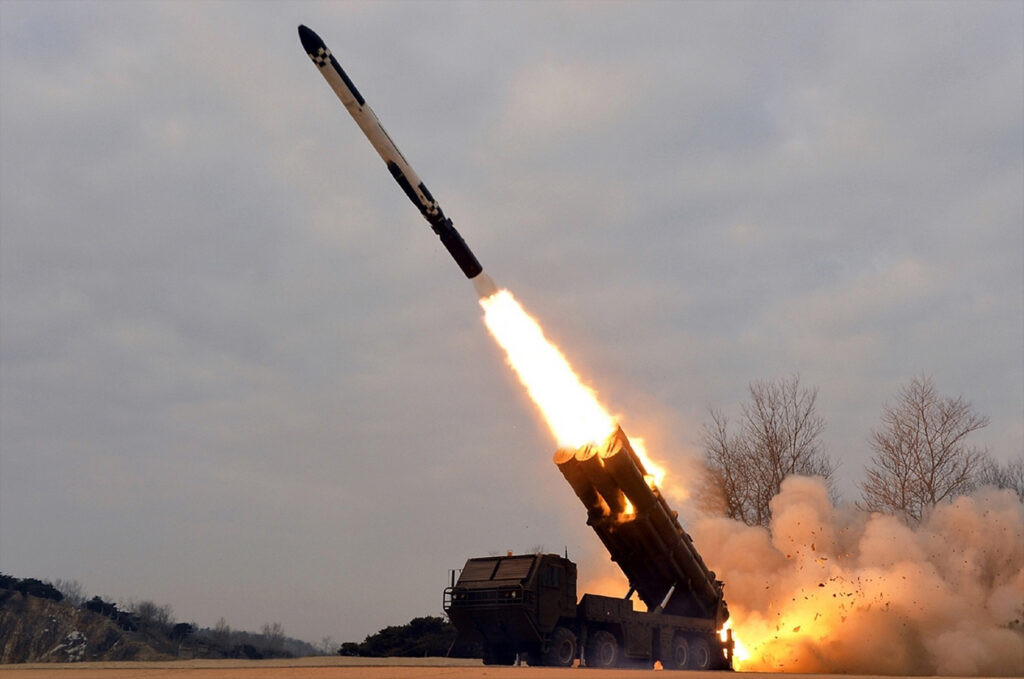
The South Korean and Chinese teams focused on implementing the interim agreement and developing additional confidence-building measures. Both teams also stressed the need for the United States and North Korea to proceed according to certain principles, such as pursuing peace and denuclearization in a parallel, reciprocal, step-by-step, and gradual manner. Additionally, the Chinese team sought to formalize these principles in a code of conduct as well as to establish a comprehensive roadmap for negotiations. It also expressed concerns about South Korea’s growing conventional capabilities and the potential for an inter-Korean arms race, and the team advocated for the dissolution of the UNC despite the nonbinding nature of the end-of-war declaration. By the end of the day, the four teams achieved more clarity about their respective goals and demands, but critical questions about the scope and pace of the peace and denuclearization process remained unanswered, and no additional agreements were reached. None of the four teams engaged in bilateral meetings, only discussing issues in a plenary setting.
Scenario 2: Vienna Proposal
The second scenario was set after two years of significant compliance under the Stockholm Agreement. Working-level teams from the four countries had been negotiating toward another potential interim agreement, the details of which had been discussed extensively ahead of a summit in Vienna (“the Vienna Proposal”). The Vienna Proposal called for all four countries to make additional concessions.
Under the Vienna Proposal, North Korea would agree to:
- provide a declaration of its entire nuclear material stockpile and its nuclear facilities beyond Yongbyon;6
- transfer 10 kilograms of plutonium (enough for about two nuclear weapons) and 400 kilograms of highly enriched uranium (enough for about 16 nuclear weapons) to China, to be verified by IAEA experts;7
- provide a declaration of all intermediate- and intercontinental-range ballistic missiles and declare a moratorium on all short- and medium-range ballistic missile tests;
- ratify the Comprehensive Nuclear-Test-Ban Treaty;
- accede to the Chemical Weapons Convention;
- accept periodic visits by the U.N. Special Rapporteur on human rights and the U.S. Special Envoy for North Korean Human Rights to discuss ways to work together on advancing human rights norms;
- facilitate virtual and in-person reunions of Korean American and North Korean family members separated by the war;
- strengthen transparency and accountability standards in the delivery of humanitarian assistance;
- establish a permanent inter-Korean joint military committee to advance the threat reduction activities and confidence-building measures outlined in the 2018 Comprehensive Military Agreement;8 and
- suspend its winter and summer military training cycles for as long as major U.S.-ROK joint military exercises remain suspended.
The United States would agree to
- remove North Korea from the State Sponsors of Terrorism list;
- facilitate academic, scientific, cultural, and other people-to-people exchanges with North Korea, including by loosening restrictions relating to Office of Foreign Asset Control licenses, visits by North Koreans to the United States, and the ability of North Korean diplomats to travel in the United States;
- begin senior-level military-to-military dialogues between the Defense Department and the Korean People’s Army on crisis management, strategic communications, and tension reduction;
- end the deployment of the U.S. Terminal High Altitude Area Defense (THAAD) missile defense system in South Korea;
- support the waiver of U.N. sanctions on the exports of seafood and coal for one year, which could be renewed if North Korea follows through on its commitments in the agreement;
- support temporary exemptions from U.N. sanctions for limited inter-Korean joint venture projects (see bilateral free trade zone in the South Korea section below);
- lift the ceiling on imports of refined petroleum and crude oil;
- support North Korea’s right to possess a civilian nuclear program and help it transition its military nuclear program into a civil program under cooperative threat reduction activities;
- facilitate technical assistance from international financial institutions related to economic reforms; and partner with South Korea to help put North Korean satellites into orbit for nonmilitary purposes.
- South Korea would agree to
- establish a bilateral trade pact on the Korean Peninsula that would allow for the limited exchange of agricultural goods between the two Koreas;
- resume the joint tourism project at Mount Kumgang;
- invest in strengthening the Seoul-to-Pyongyang section of a broader Korean Peninsula railroad network; work with Russia to help connect gas pipelines between Russia and South Korea through North Korea; and declare a moratorium on all ballistic missile tests.
Finally, China would agree to
- increase humanitarian assistance and tourism promotion to North Korea;
- strengthen economic investment in the Rason and Sinuiju Special Economic Zones and mining industries; and
- provide technical advice on economic reforms to North Korea.
The scenario also highlighted areas where disagreement remained. North Korea and China were concerned about South Korea’s growing conventional military capabilities and wanted to begin discussions on conventional force reductions on the peninsula. China also raised the prospect of disestablishing the UNC through a U.N. Security Council resolution. The United States and South Korea remained concerned about North Korea’s ongoing possession of fissile material and nuclear weapons. In addition, the U.S. Senate insisted that any final agreement with North Korea receive its consultation and approval.
The purpose of this scenario was to advance the negotiations beyond the Stockholm Agreement in Scenario 1. The exercise organizers thus introduced a wide range of potential concessions that each country could offer to urge participants to think about taking diplomatic risks. These concessions were described as “proposals” rather than “agreements” to indicate that the concessions were not fixed and that participants could accept, reject, or modify them as they saw fit.
Team Responses to Scenario 2
On Day 2, the four teams conducted bilateral meetings for the first time to clarify the measures outlined under the Vienna Proposal. The U.S. team urged Pyongyang to take concrete steps toward denuclearization, particularly the destruction of nuclear facilities, and allow for verification through international inspections in exchange for U.S. concessions in areas such as sanctions relief and military exercises. The North Korean team felt that it was giving up more than it was receiving under the Vienna Proposal, and stepped back from the proposals to transfer some of its nuclear material to China and to suspend short- and medium-range missile tests until later in the process. It also demanded that all commercial sanctions be lifted and required assurances from the United States and South Korea regarding South Korea’s growing conventional capabilities and its potential to develop nuclear weapons.
In a China-DPRK bilateral meeting, the two teams agreed to pursue a code of conduct, establish a roadmap to build confidence in the peace process, and address urgent issues such as the removal of the “illegal” UNC, greater sanctions relief, and raising the caps on oil imports. In a North-South bilateral meeting, the South Korean team pushed for the dismantlement of Yongbyon, while the North Korean team sought more “permanent” reciprocal action from the South that would alleviate concerns about its growing military capabilities. The South Korean team noted in a bilateral meeting with the U.S. team that its main areas of contention with North Korea were the role and size of U.S. forces in South Korea, the status of the UNC, and South Korea’s own defense posture.
The negotiations ended without an additional agreement, but rather dissatisfaction on all sides. Some U.S. participants framed certain proposed concessions, such as the removal of the THAAD missile defense system from South Korea, as a South Korean concession to Chinese pressure rather than a move serving U.S. and allied interests. The North Korean team felt that the South Korean team had nothing to offer and that the U.S. team was disrespectful and condescending, which led the North Korean team to favor the Chinese team’s proposals.
Scenario 3: Vienna Agreement
Scenario 3 pushed the participants toward the endgame of a final peace settlement on the Korean Peninsula by presenting a situation in which many of the earlier diplomatic challenges have been, or are in the process of being, resolved. The four parties reached an agreement in Vienna (“the Vienna Agreement”) that entailed the dismantlement of North Korea’s entire nuclear weapons program, a program to monitor and verify North Korea’s compliance with dismantlement and the conversion of some facilities into civil nuclear facilities, the complete lifting of all U.N. sanctions on North Korea related to economic livelihood and luxury items imposed since 2016, and security guarantees (negative security assurances) from all sides. The Vienna Agreement also included all the items described under the Vienna Proposal in Scenario 2.
With negotiations appearing to head toward the final stages, North Korean President Kim Jong Un, in a letter to the U.S. president, called for a “formal and final” expression of new U.S.-DPRK relations and a lasting peace regime on the Korean Peninsula. Kim added that “it is long past time to eliminate Cold War vestiges and replace the Armistice Agreement with a peace settlement.” A subsequent article in North Korea’s Rodong Sinmun newspaper argued that replacing the armistice would rectify its “arbitrary, baseless infringements on North Korean territorial sovereignty,” such as the UNC’s military control over the five islands off the North Korean coast known as the Northwest Islands, as well as the UNC’s self-imposed Northern Limit Line.9 In addition, the North Korean foreign minister insisted that the end of the Armistice Agreement necessarily required the dissolution of the “hollow” UNC and the removal of any foreign forces in South Korea and Japan acting under UNC authority. Furthermore, at a China-DPRK summit, Presidents Kim and Xi Jinping expressed agreement that U.S. forces in South Korea represented a hostile presence contradictory to the goals of new U.S.-DPRK relations and a peace regime.
Recognizing the opportunity for a more “Korean-led” peace management system that minimizes foreign intervention, South Korea proposed the creation of a new inter-Korean Peace Management Committee, which would include the joint military committee proposed in Scenario 2 and a joint committee to manage nonmilitary issues such as economic cooperation and people-to-people exchanges. The Peace Management Committee would also allow the United States and China to participate as observers. However, some U.S. experts have instead called for the UNC to be repurposed as a peacekeeping operation to strengthen international support for peace on the Korean Peninsula.
The purpose of Scenario 3 was to explore participant responses to broader strategic issues as well as any new challenges that might arise as the four countries drew nearer to a final peace settlement. In particular, the exercise organizers wanted to see how the four countries would respond to challenges related to the Armistice Agreement, territory and sovereignty, the UNC, U.S. forces on the Korean Peninsula, deterrence, and peacekeeping.
At the beginning of this scenario, the organizers injected instructions from the U.S. and North Korean presidents to their respective negotiating teams that they should seek, as best they could, to reach a final, comprehensive peace settlement.
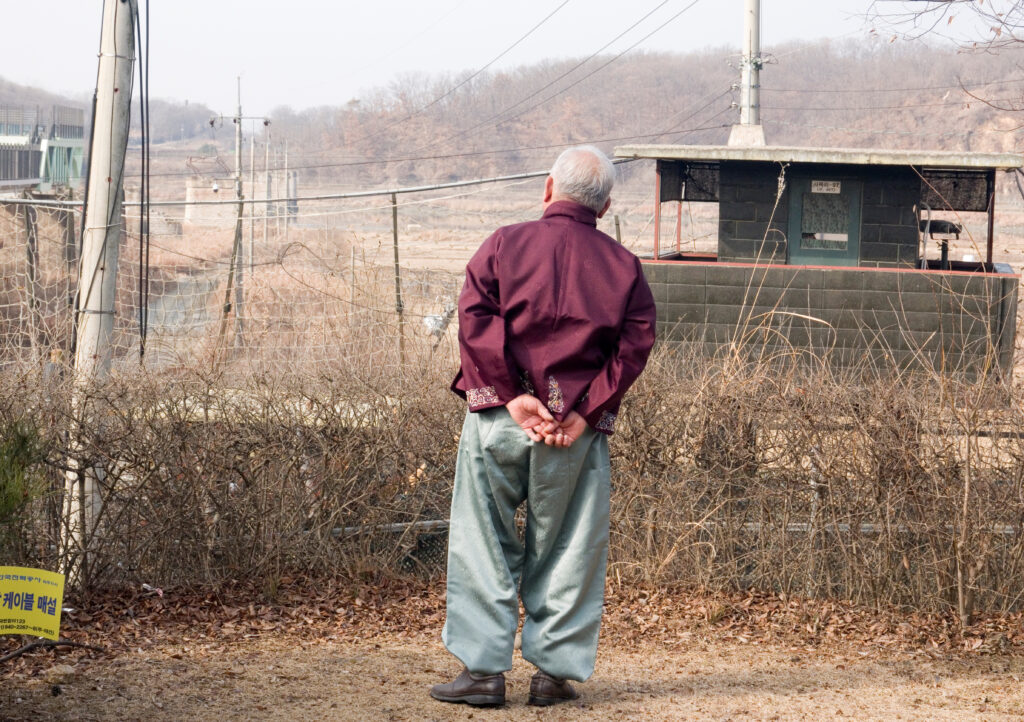
Team Responses to Scenario 3
Following the presidential directives, the U.S. and North Korean teams began negotiating more proactively toward a final deal. Both sides’ rhetoric shifted toward normalizing relations and being more specific about desired confidence-building measures. The North Korean team asked the United States to establish embassies in each other’s capitals, remove all international sanctions, dismantle the UNC, relocate U.S. bases further south, suspend all U.S.-ROK joint military exercises, and reduce the U.S. deployment in South Korea to no more than 8,000 troops. It also sought assurances that the peace agreement would be approved by the U.S. Congress. The U.S. side cautioned that diplomatic and economic normalization would require North Korea to improve its record on human rights and undertake government and economic reforms, and that any force reductions would need to be reciprocal. Nevertheless, the U.S. team pledged to create timelines and benchmarks for lifting sanctions and committed to discuss U.S. tr oop reductions with South Korea. In response, the North Korean team voiced willingness to have a dialogue with Washington on human rights. Internally, the U.S. team continued to have disagreements about how to balance diplomatic progress with maintaining deterrence and military readiness.
The South Korean team continued to take a flexible approach to negotiations. During a bilateral meeting with North Korea, it requested additional security gestures (e.g., North Korea’s reentry into the Treaty on the Non-Proliferation of Nuclear Weapons, the removal of all fissile material, and the establishment of a nuclear weapons–free Korean Peninsula and an inter-Korean military commission) while also offering greater confidence-building measures (e.g., modifying the size and mission of U.S. forces in South Korea, replacing the armistice with a peace treaty, providing light water reactor–based nuclear power plants to North Korea, supporting North Korea’s peaceful use of nuclear energy, and enhancing inter-Korean economic cooperation). However, it maintained that only the U.S.-ROK alliance could decide on matters such as alliance force posture and that the territorial status quo of the Northwest Islands was nonnegotiable.
The Chinese team also supported a final peace agreement as long as it did not harm China’s strategic interests. It continued to push for post-armistice security mechanisms for the Korean Peninsula that would reduce U.S. influence and dissolve the UNC or modify it into a peacekeeping operation under U.N. Security Council authority. Additionally, the Chinese team advocated for changing the role, scope, and function of U.S. troops to be more defense-oriented and limited to humanitarian matters on the Korean Peninsula. The team emphasized its support for the establishment of a “Korean-led” peace management mechanism and a regional security framework that included Japan and Russia.
Ultimately, the four countries did not reach a final agreement at the end of the exercise. However, the discussions revealed many potential areas of compromise that could serve as the basis for a peace settlement as well as several areas of continued disagreement that would require additional negotiations. These, along with other key takeaways and recommendations for policymakers and future negotiators, are discussed in the following section.
Key findings
The peace game exercise revealed 10 key insights about the challenges of building peace on the Korean Peninsula. This section describes the insights and then offers the authors’ recommendations for overcoming the challenges and making tangible progress toward reducing tensions, enhancing mutual security, improving relations, and reaching a final and comprehensive peace settlement.
1. The U.S. and South Korean teams perceived the North Korea threat differently, leading to divergent approaches. The gap in how the two allies viewed the threat posed by North Korea led to different perspectives on various security measures, such as joint military exercises, and the danger in treating them as confidence-building measures. A South Korean team member noted that her team focused on being positive and making a diplomatic breakthrough, while the U.S. team’s positions were informed by worst-case scenarios. For example, a U.S. team member repeatedly underscored the importance of maintaining joint U.S.-ROK military exercises, arguing that the focus should be “to maintain readiness and deterrence and to prevent war on the Korean Peninsula.” He added that if the exercises were suspended for several years, as the scenarios indicated, then alliance training and readiness would be degraded to the point that the best military advice would be to remove U.S. forces from the peninsula. A South Korean team member responded, however, that if negotiations make progress and the security environment improves, then the joint exercises should be modified to adjust to the new environment. Similarly, a Chinese team member argued that “if North Korea has already taken certain steps to denuclearize . . . then there is a natural demand for the United States and South Korea to reduce and even eliminate the threat that they bring to North Korea with the military alliance.” The same U.S. team member also expressed discontent that there was “no degradation of training from the North or China… and there is never any reciprocity for reduction in [alliance] training anywhere else,” despite the fact that Scenario 2 included a reciprocal suspension of the North Korean military’s winter and summer training cycles as part of the Vienna Proposal.
The real-world divergence in U.S. and South Korean views about the North Korea threat tends to be shaped by the administrations in power in both countries. In Seoul, progressives tend to view the threat as mostly contained and mutable, whereas conservatives tend to see it as constantly malign and growing. In recent years, both Democratic and Republican perspectives in Washington — jaded by North Korea’s unwillingness to denuclearize — have tended to share the more pessimistic outlook. If a conservative South Korean government emerges in 2022, gaps in alliance thinking could narrow in some ways (e.g., to similar views on the North Korean threat) but widen in others (e.g., on the need for U.S. tactical nuclear weapons in South Korea).
Recommendation: The United States and South Korea should strengthen coordination of U.S.-ROK alliance policies and seek alignment where possible, especially over relatively high-risk decisions such as engagement strategies, military exercises, and deployments. It is natural for the two countries, despite being allies, to occasionally have divergent views based on their respective national interests, and for those differences to be heightened depending on which political party is in power in each country. The key is for both countries to be treated as coequal partners in the alliance and for their preferences to be given equal weight.
* * *
2. The U.S. and North Korean teams perceived potential losses more acutely than potential gains. The U.S. and North Korean teams seemed beset by loss aversion, magnifying what they might be conceding while discounting the potential benefits they might receive in return.10 For example, in Scenario 1, the North Korean side felt that giving up its Yongbyon nuclear facilities was irreversible and therefore excessive compared to what it perceived as insufficient sanctions relief and security guarantees — even though the scenario only mentioned shutting down rather than dismantling the facility. Likewise, the U.S. team homed in on the potential degradation of military readiness caused by the suspension of exercises despite scenarios that described North Korea taking unprecedented denuclearization measures and offering to suspend its own military exercises.
Recommendation: Loss aversion can be mitigated through various strategies, including proceeding in a step-by-step fashion (minimizing loss through incremental steps), using reversible measures (showing that losses are not permanent), lowering the risk of failure, highlighting potential gains, and underscoring the impact of loss aversion on policy innovation. In negotiations, North Korea has typically sought phased, gradual approaches to denuclearization that start with reversible measures, such as a freeze on nuclear activities. When considering concessions, the United States could explore riskier proposals, such as an end-of-war declaration or partial sanctions relief, while also safeguarding against potential attendant risks (e.g., by negotiating the end-of-war declaration text so that it has no legal effect on the Armistice Agreement and the UNC or by employing snapback provisions when relieving sanctions). Ultimately, no negotiated settlement will be risk-free and without compromises on all sides. The challenge will be to assess the likely risks involved in terms of the probability of their occurrence and their short- and long-term impacts, to determine whether the risks can be mitigated, and then to weigh them against potential benefits.
* * *
3. All sides seemed open to negotiations as long as the other side took the first conciliatory step. The U.S. and North Korean teams expressed willingness, both internally and bilaterally, to negotiate and make concessions, but neither wanted to move first. The U.S. side voiced openness to sanctions relief, restraint in military exercises, and other confidence-building measures as long as there was irreversible progress in denuclearization first. Similarly, the North Korean team said it could take significant steps related to denuclearization, humanitarian matters, and even human rights as long as it received proportional concessions on sanctions relief, security measures (e.g., suspension of joint exercises and reductions in South Korea’s conventional capabilities), and the right to possess civilian nuclear and space programs. There appeared to be many potential areas of agreement or compromise if the two sides could break the ice and overcome the sequencing issue. A U.S. team member noted that a tough U.S. public posture often was necessary for its domestic audience in the current partisan environment, but this messaging could belie U.S. flexibility toward North Korea.
The intractability of the Korean Peninsula problem and the calcification of positions over the last seven decades means that only the highest level of executive leadership can compel an end to the impasse.
Recommendation: The United States should consider conciliatory gestures that jump-start negotiations but do not undermine its security interests. Given its vastly stronger diplomatic, military, and economic position relative to Pyongyang, Washington should initiate confidence-building measures that not only break the ice but also invite North Korean reciprocation. There are a range of gestures — including ending the travel ban to North Korea, declaring an end to the Korean War, establishing a moratorium on the deployment of U.S. strategic and nuclear assets to the Korean Peninsula, offering humanitarian and COVID-19 vaccine assistance, promising partial sanctions relief in exchange for commensurate denuclearization steps, and conveying these steps through a private letter from President Joe Biden to President Kim — that would not impair U.S. security or cross U.S. redlines (such as meeting with Kim too early or providing significant sanctions relief up front). Ultimately, the foremost priority should be getting to talks, reducing security threats, and improving relations, not arguing about which country takes the first step.
* * *
4. Presidential leadership and political will were paramount to reaching an agreement. None of the teams actively sought to negotiate, exchange concessions, or reach an agreement, even when instructed to do so by the exercise organizers, until, at the beginning of Scenario 3, the organizers injected orders from the U.S. and North Korean presidents to their respective negotiating teams to reach a deal. One U.S. team member remarked that the presidential directive “really crystallized our way forward as a team,” and compared it to President Barack Obama’s pursuit of the Joint Comprehensive Plan of Action with Iran and his empowerment of U.S. negotiators to make concessions when necessary. A South Korean team member added that it is hard to develop consensus ideas within the teams without presidential leadership.
It may be possible to attribute some of the difficulty in reaching a deal to artifacts of the exercise itself, such as limited time for negotiations or vague instructions on required outcomes. However, real-world negotiations also face constraints — time, resources, public opinion, Congressional will, and so forth — that can impede progress.
Recommendation: The intractability of the Korean Peninsula problem and the calcification of positions over the last seven decades means that only the highest level of executive leadership can compel an end to the impasse. Although achievements were limited, the Trump-Kim summits in Singapore, in June 2018, and Hanoi, in February 2019, hinted at the potential for what is possible when there is political will at the presidential level. Also, on the U.S. side, frequent coordination and consultation with Congressional leadership, including through briefings and even delegation visits to North Korea when possible, could lead to greater intragovernmental support for a final agreement and assuage concerns about the United States reneging on a deal after it is reached — an understandable concern following the U.S. withdrawal from the Paris climate accords in 2017 and the Iran nuclear deal in 2018.
* * *
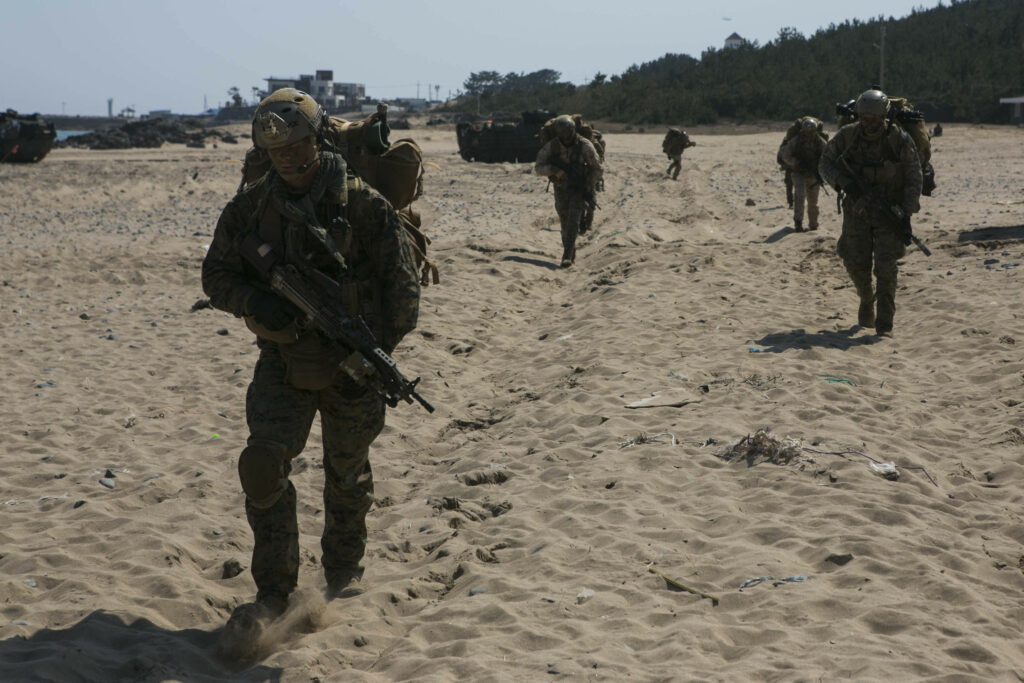
5. The U.S.-China rivalry fueled a zero-sum mentality. The deepening rivalry between the United States and China, and the tendency to view Asia through a zero-sum lens, hindered opportunities for breakthroughs and created friction between the U.S. and South Korean teams. For example, the Chinese team’s insistence on a multilateral code of conduct for the Korean Peninsula may have been partially aimed at reducing U.S. influence over and beyond the Korean Peninsula. The U.S. team, for its part, was concerned that South Korea would “give away too much to China” (notably, agreeing to the withdrawal of the THAAD missile defense system and the dissolution of the UNC) and believed that the United States needed to be a “reality check” against the Chinese team’s calls throughout the exercise for the two Koreas to be bold in their concessions. A U.S. participant warned against being “outflanked” by a united South Korea and China — a concern rooted in the notion that what the Chinese team wants is necessarily antithetical to U.S. interests.
Recommendation: Policymakers should avoid framing the peace and denuclearization process as a subset of U.S.-China strategic competition. Such a narrow and overly politicized formulation can distract negotiators from the distinct issues surrounding the Korean Peninsula, as well as suggest connections that are tenuous or do not exist. A non-zero-sum mentality can help keep the focus on issues that require cooperation by the United States and China, such as the IAEA’s proposed verification of fissile material transferred from North Korea to China outlined in Scenario 2.
* * *
6. The United States and North Korea were the central actors. Despite China’s and South Korea’s interests and influence on the Korean Peninsula, the United States and North Korea were the principal actors in this exercise. The two countries were the greatest determinants of whether discussions remained static or moved forward, and they had control over the primary confidence-building measures that were being discussed. The Chinese and South Korean teams offered clear, strong ideas for how discussions should proceed and what would be appropriate exchanges of measures, but it was ultimately the U.S. and North Korean teams that entertained and decided on these proposals. As one North Korean team member noted, “In the real world and in this exercise… the U.S. and DPRK are the real players, so the starting point is for them to build trust and political confidence.”
Recommendation: Negotiations should be as agile, focused, and results-oriented as possible. They should start with bilateral U.S.-DPRK and inter-Korean talks and expand to trilateral, quadrilateral, and multilateral formats as the issue sets grow.
* * *
7. The U.S. and North Korean teams appeared reactive and did not generate new ideas. Although the U.S. and North Korean sides were the primary actors in the exercise, they also seemed the least proactive in proposing specific ideas or ways forward. One U.S. team member said that his team “was clear and consistent in describing its goals and priorities” but did not offer new ideas, types of packages, or formats. “We almost had to be appeased,” he added, “and out-of-the-box ideas or catalysts for momentum seemed to come from the ROK and China instead.” This in turn led to U.S. concerns about whether there was bilateral or even trilateral dealmaking going on between the two Koreas and China. The North Korean team also expressed clear interests and goals but insisted on the U.S. side taking the first step to implement specific confidence-building measures.
Policymakers should avoid framing the peace and denuclearization process as a subset of U.S.-China strategic competition.
Recommendation: The United States should seize control of the process and persuade North Korea to return to negotiations through incentives. A status quo approach will either result in a continued stalemate, which includes a growing North Korean nuclear threat, or significant North Korean provocations, which would further undermine international security and portray Washington as weak and reactive. Alternatively, the United States can consider exploring ideas proposed by other countries, such as South Korea’s and China’s call for an end-of-war declaration or China’s calls for parallel-track talks on peace and denuclearization, a dual freeze on nuclear and missile testing and joint military exercises, and partial U.N. Security Council sanctions relief. Negotiations should not be treated like a competitive battle but rather as a process where all sides receive some, though not all, of what they want.
* * *
8. The North Korea problem set has multiplied over the years. The scale of the Korean Peninsula challenge, going back to the Korean War, has evolved into a growing set of deeply complex and complicated issues. What began as an inter-Korean conflict nested within broader geostrategic tensions has metastasized into an international problem that includes nuclear weapons and other weapons of mass destruction, proliferation threats, human rights concerns, multilateral and unilateral sanctions, cybercrime, and global financial threats. There will continue to be tension between those who want to limit the agenda (one South Korean team member said that too many “questions and issues may complicate the negotiations” and that “we need to focus on the main subject”) and those who want to broaden the scope of discussions (one U.S. team member argued that “sometimes you can only solve tough issues by expanding the problem set”).
Recommendation: The United States and South Korea should establish and maintain a consultative body that examines the full range of issues involved in a comprehensive peace process. Some issues will necessarily be more prominent and urgent in the peace process than others, but awareness of all the issues can help strengthen negotiating positions and inform new strategies.
* * *
9. Participants sometimes lacked a common understanding of various issues. The game exposed the need for a common understanding of the many issues related to the peace process, such as the utility of joint military exercises, the legal authorities of the UNC, the difference between executive agreements and treaties under U.S. law, and the impact of replacing the Armistice Agreement on territorial issues. For example, some South Korean team members seemed unaware that, under the Armistice Agreement, the commander-in-chief of the UNC, not the South Korean government, maintains military control over the Northwest Islands.11 Although these legal and technical issues could be seen as future challenges to address later, understanding that these issues exist and need to be resolved can help improve prospects for success.
Recommendation: Policymakers and experts focusing on North Korea should make peace game simulations a regular part of their analytic efforts. Just as defense officials and security analysts utilize war games to learn about potential military conflict scenarios, diplomats, defense officials, and policymakers should be employing multinational peace game exercises to explore various engagement and peacebuilding scenarios. These simulations can help policymakers identify pitfalls and opportunities before actual negotiations, as well as enhance the public’s understanding about the trade-offs involved.
* * *
10. The lack of actual North Korean participants limited the exercise’s ability to generate informed decisions. The participants who comprised the North Korean team (one U.S. and three Chinese experts on North Korea) represented North Korean interests competently, but they were constrained by their limited knowledge of the North Korean government’s internal thinking and dynamics. This in turn made it difficult for the team to confidently represent what measures North Korea would demand and concede and what risks it would take.
Recommendation: The United States and North Korea should engage across multiple channels and levels, including military, intelligence, economic, parliamentary, nongovernmental, and people-to-people. In the current situation, where North Korea possesses nuclear weapons but feels extremely insecure, and there is poor mutual comprehension of the other side’s goals, interests, and concerns, it is imperative that bilateral communication is enhanced as much as possible.12 This is especially the case during transitions of power, when perceived or actual changes to administration policies and objectives occur, impeding implementation of agreements. As in the exercise, real-world negotiations and interactions with North Korea are most useful and productive when based on the best information.
* * *
The North Korea challenge is increasingly being viewed as a problem to be managed, not solved. This view holds that if North Korea’s goals and behavior are hostile and rigid, then the primary objective should be to contain and manage it through deterrence and pressure. However, if policymakers believe that North Korea can be denuclearized in the long-term, that U.S.-DPRK and inter-Korean relations can be improved, that regional tensions can be reduced, and that the arms race can be reversed, then innovative diplomatic strategies are essential. But innovation requires accepting and taking calculated risks.
The United States and North Korea should engage across multiple channels and levels, including military, intelligence, economic, parliamentary, nongovernmental, and people-to-people.
As the diplomatic stalemate on the Korean Peninsula persists, U.S. and South Korean policymakers need to examine ways to disrupt the status quo and make diplomatic progress while not undermining deterrence and other core national security interests as the process plays out. Peace game exercises that present scenarios in which all sides seek to reduce tensions and build peace can help policymakers think beyond deterrence toward confidence-building and calculated risk-taking.
A Korean translation of this brief can be found here.
Program
Countries/Territories
Entities
Citations
See, for example, “Preparation for Instability in North Korea: A Korean Peninsula Crisis Simulation.” Center for Strategic and International Studies, November 2021. www.csis.org/preparation-instability-north-korea-korean-peninsula-crisis-simulation ; Murdock, Clark, and Thomas Karako. “Thinking about the Unthinkable in a Highly Proliferated World.” Center for Strategic and International Studies, July 2016. http://missilethreat.csis.org/wp-content/uploads/2017/11/Highly-Proliferated-World.pdf ; McDevitt, Michael, and Yoichi Kato. “Testing Trilateral, US-Japan, and US-ROK Responses to North Korean Provocations: Tabletop Exercise Pacific Trident, February 14–16, 2018.” Sasakawa Peace Foundation USA, March 2018. www.spfusa.org/wp-content/uploads/2018/03/TTXRpt_PacificTrident_032218_Web.pdf ; Allam, Hannah. “Can This Group of Teen Girls Save the World from Nuclear War?” NPR, July 25, 2019. www.npr.org/2019/07/25/744193558/can-this-group-of-teen-girls-save-the-world-from-nuclear-war ; and Cooper, Helene, and Eric Schmitt. “U.S. Banks on Diplomacy with North Korea, but Moves Ahead on Military Plans.” New York Times, February 28, 2018. www.nytimes.com/2018/02/28/world/asia/us-north-korea-military-war-planning.html. ↩
Aum, Frank, et al. “A Peace Regime for the Korean Peninsula.” Peaceworks no. 157. United States Institute of Peace, February 2020. www.usip.org/publications/2020/02/peace-regime-korean-peninsula. ↩
The Korean War ended in 1953 with an Armistice Agreement that ceased military hostilities until “a final peaceful settlement is achieved.” A conference in Geneva the next year failed to reach a final settlement. Today, despite the absence of active military hostilities, the United States and South Korea do not maintain diplomatic or economic relations with North Korea and tensions remain high on the Korean Peninsula. The complete text of the Korean War armistice agreement is available on the US State Department website at https://2001-2009.state.gov/t/ac/rls/or/2004/31006.htm. ↩
To encourage open dialogue, the exercise was conducted under the Chatham House Rule, meaning participants are free to use the information received but neither the identity nor the affiliation of the speakers, nor that of any other participant, may be revealed. ↩
In response to North Korea’s armed attack against South Korea in June 1950, the United Nations Security Council, under Security Council Resolutions 82, 83, 84, and 85, recommended that member states of the United Nations aid the Republic of Korea in repelling the attack and that the member states make “such forces and other assistance available to a unified command under the United States of America.” This “United Nations Command” (UNC) included troops and contributions from 15 member states in addition to the United States, but the non-U.S. troops constituted only 4 percent of the UNC’s total forces at peak strength in 1953. The UNC maintained nominal responsibility for South Korea’s defense during the next two decades; however, the majority of the 15 sending states withdrew most of their troops by 1956, and the defense mission was fulfilled by U.S. and South Korean forces. Presently, North Korea, China, and the Russian Federation dispute the legitimacy of the UNC, arguing that it is a hollow entity maintained by Washington to sustain the pretense of international solidarity against North Korea and continue U.S. authority over UNC rear bases in Japan. For more details on the UNC, see Creamer, Shawn P. “The United Nations Command and the Sending States.” International Council on Korean Studies, July 28, 2012. www.icks.org/n/data/ijks/2017FW-4.pdf. ↩
The scenario stated that North Korea’s declarations listed 45 kilograms of plutonium (enough material for approximately nine nuclear weapons) and 1,800 kilograms of highly enriched uranium (enough for about 72 nuclear weapons). These declarations are at the low end of estimates by present-day analysts for the amount of fissile material North Korea could have on hand by 2028, the year the scenario was set, based on the amount of material North Korea can produce each year. The scenario also stated that North Korea declared one additional enrichment facility outside of Yongbyon without divulging its location. This declaration has a real-world antecedent: present-day analysts believe North Korea has at least one enrichment facility outside of Yongbyon, and they believe they already know its whereabouts. See, for example, Panda, Ankit. “Exclusive: Revealing Kangson, North Korea’s First Covert Uranium Enrichment Site.” The Diplomat, July 13, 2018. https://thediplomat.com/2018/07/exclusive-revealing-kangson-north-koreas-first-covert-uranium-enrichment-site. ↩
Siegfried Hecker estimated that, at the end of 2020, North Korea possessed 25–48 kilograms of plutonium and 600–950 kilograms of highly enriched uranium. “Estimating North Korea’s Nuclear Stockpiles: An Interview with Siegfried Hecker.” 38 North, April 30, 2021. www.38north.org/2021/04/estimating-north-koreas-nuclear-stockpiles-an-interview-with-siegfried-hecker. ↩
As part of the September 2018 inter-Korean summit in Pyongyang, the two Koreas signed the “Agreement on the Implementation of the Historic Panmunjom Declaration in the Military Domain” (also called the “Comprehensive Military Agreement”). This agreement outlined various tension reduction measures on the Korean Peninsula, including the removal of landmines, guard posts, weapons, and personnel in the Joint Security Area on both sides of the Korean border; the creation of military buffer zones in the air, on land, and at sea; and the establishment of peace zones near contested maritime areas. ↩
After the end of the Korean War, the UNC unilaterally established the Northern Limit Line (NLL) as a military control measure in the Yellow Sea area that touches the North and South Korean demarcation line. This line set a northern limit for UNC and South Korean vessels to avoid potential military clashes with North Korea while still allowing access to the five Northwest Islands under UNC authority off the North Korean coast. North Korea began contesting the NLL around 1973, with its fishing boats and military vessels crossing the line 20 to 30 times a year by the late 1970s. South Korea maintains that the NLL is a de facto maritime boundary to which North Korea acquiesced through its conduct until 1973. This dispute contributed to serious inter-Korean naval clashes near the line in 1999, 2002, and 2009, as well as North Korea’s sinking of the South Korean corvette Cheonan off Baengnyeong-do in 2010. See Aum et al. “A Peace Regime for the Korean Peninsula.” 26. ↩
For a discussion of loss aversion and prospect theory, see, for example, Levy, Jack S. “Prospect Theory and International Relations: Theoretical Applications and Analytical Problems.” Political Psychology 13, no. 2 (1992): 283–310. ↩
In practice, South Korea has administered and maintained control over the Northwest Islands under UNC authority, and North Korean attacks against the islands, such as the November 2010 shelling of Yeonpyeong-do, or in the vicinity of the islands, such as the March 2010 sinking of the South Korean ship Cheonan off the coast of Baengnyeong-do, have registered in the public consciousness as violations of South Korean sovereignty. ↩
Aum, Frank, and Daniel Jasper. “The Case for Maximizing Engagement with North Korea.” 38 North, April 16, 2021. www.38north.org/2021/04/the-case-for-maximizing-engagement-with-north-korea. ↩
